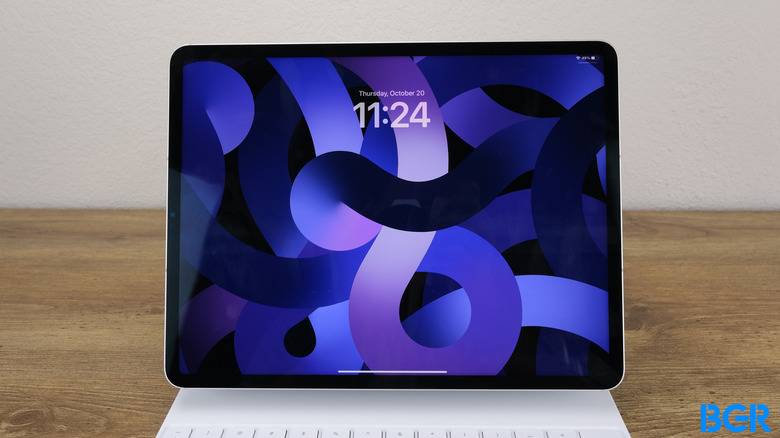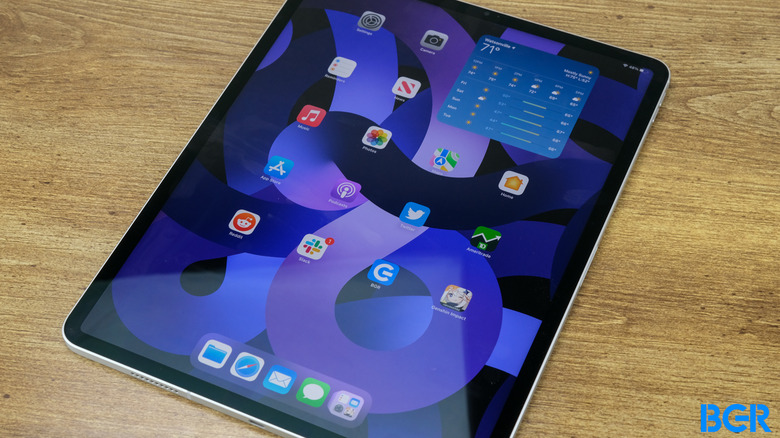OLED iPad Pro: Size Matters, But It's Not What You Think
I said a few weeks ago I wouldn't buy an OLED iPad Pro and the rumored sky-high price wouldn't be the main reason, though it was part of it. At the time, rumors said the 11-inch iPad Pro OLED would start at $1,500, which would be too expensive for a tablet I wouldn't use for work. I did leave some wiggle room, saying that a price closer to $1,000 could have me change my mind.
Rumors that followed claimed the initial price leaks were incorrect. The OLED iPad Pros would come at a premium of some $160 over their predecessors. That still means the 11-inch model would start at under $1,000, which is a lot to pay for a tablet I don't want to use for work. Yet, I have to say that I want to see what the OLED iPad Pros are all about before I actually get a new tablet.
Size will be a key factor for me, but it's not what you think. I care more about the actual weight of the tablet than the screen size.
The OLED iPad Pro models should come in 11-inch and 13-inch flavors. They'll be nearly identical to their predecessors, though the larger model will get a slightly larger screen. Apple is using new OLED panel tech from Samsung and LG, which will let the company reduce the thickness of the already thin iPads.
If I were to buy an iPad Pro, I'd go for the 11-inch model right away, no questions asked. And, of course, the 11-inch iPad Pro OLED model is reportedly in tight supply.
Unlike previous generations of iPad Pros, both 2024 models will get the same high-quality screen. Previously, only the 12.9-inch tablet got the better mini LED screen (Liquid Retina XDR, as Apple calls it). Therefore, I wouldn't miss out on the screen quality by picking the 11-inch version.
I care about the weight
The reason I want an 11-inch tablet doesn't concern the display size, but the weight. I'd use the OLED iPad Pro for content consumption most of the time. I'd read, watch Netflix, and play games. Maybe write the odd email or talk to ChatGPT. I'm certain I wouldn't do any meaningful work on it, and that's because iPadOS can't replace macOS for me.
An 11-inch iPad would be more comfortable in bed or while sitting on a couch. The 4th-gen 11-inch model weighs 466 grams (1.03 pounds). The 6th-gen weighs 682 grams (1.5 pounds). Add 3-4 grams extra for 5G connectivity on each model.
That extra 216 grams might not seem significant, but it is. Add a Magic Keyboard and other accessories, and the weight increases. It might not matter when I'm at home, but I'd take the iPad with me when I travel.
As I'm aging and lugging around gadgets, I've started paying more attention to the weight I carry. If I have to pack a MacBook, iPad, and other objects in a bag on my back, then those extra 200 grams will matter. So, that's a major consideration for this potential OLED iPad Pro buyer.
That's why the overall footprint of the iPad mini is so attractive to me. Apple's smallest tablet weighs 293 grams (0.65 pounds), and it could very well be the tablet I end up choosing. But there's no indication an iPad mini 7 is coming out in March.
The OLED upgrade
The OLED iPad Pro would give me access to better hardware, including the M3 chip, thus future-proofing the tablet. I'd certainly keep using the iPad Pro for probably 4+ years before even considering an upgrade. And maybe iPadOS would evolve during this time into an operating system that's more similar to macOS.
The upcoming iPad Air 6 is an alternative to the 11-inch iPad Pro OLED model, of course. And a cheaper one. It would also fit the weight requirement. The iPad Air 5 weighs 461 grams (1.02 pounds), while the iPad 10 is slightly heavier at 477 grams (1.05 pounds). Not to mention that I'd get better deals on older iPad Pro generations once the OLED models roll out.
Since I did mention the age consideration, I'll also address the OLED screen upgrade from the same point of view. I'd want the best possible screen from a device that would replace some of the things I do on my iPhone and my Mac currently. OLED screens feature better brightness and higher contrast. They might perform better in both brighter and low-lit settings than LCD.
With all that in mind, I'm certainly excited to at least see the OLED iPad Pro in person. I'll have plenty of time to decide after that.

